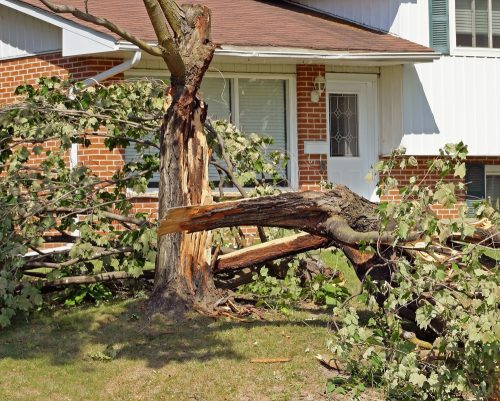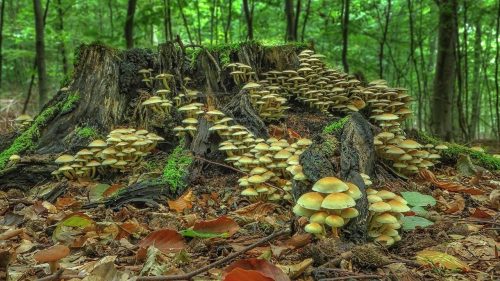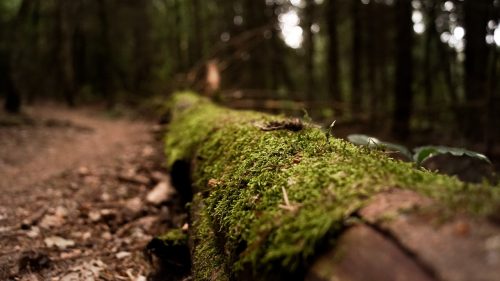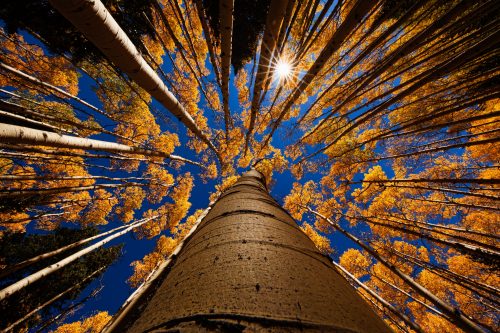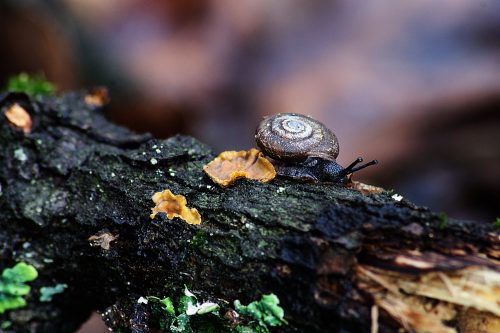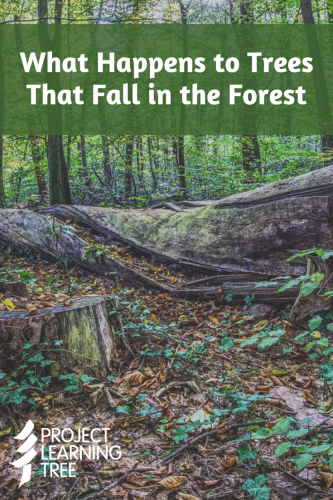 Whether a standing snag or a rotting log, dead trees play an essential role in sustaining life around them. It’s important for anyone who cares about the planet’s health to understand why a fallen tree found in nature is so essential to maintaining the delicate balance of the ecosystem around it.
Whether a standing snag or a rotting log, dead trees play an essential role in sustaining life around them. It’s important for anyone who cares about the planet’s health to understand why a fallen tree found in nature is so essential to maintaining the delicate balance of the ecosystem around it.
Tree Lifespans
The lifespan of North American trees varies greatly depending on their species and circumstances.
For example, the grey birch has a lifespan of only 30-50 years and is among those with the shortest lifespans. On the other hand, Great Basin bristlecone pines can live for thousands of years. In fact, the oldest living individual organism in the world is a Great Basin bristlecone pine still living in the White Mountains of California that is over 5,000 years old! The exact location is protected.
While trees can live for tens, or hundreds, or thousands of years because they continually produce new tissues and adapt to their surroundings, the reality is that most succumb far earlier due to injury and disease (and sometimes both).
What is Tree Decay?
Decay is simply the process of rotting or decomposition.
The terms tree decay and tree decomposition can be used interchangeably to describe a biological process where wood’s cellulose and lignin convert to carbon dioxide and water, and the remaining nutrients are simply released into the soil.
Conditions that Cause Tree Decay
Wounds
Tree wounds occur when a tree is injured, and they can limit the tree’s ability to take in water or food properly and protect itself from infection, infestation, or disease.
The two basic types of tree wounding are stubs and scars.
Stubs
A stub is created when tree branches or tops break off or die. They can stick out from the stem and prevent the wound from closing and healing or leave a giant hole, both of which invite decay.
Storms with intense winds commonly knock tree branches off and cause stubbing.
Scars
When bark is removed or dies off, scars can leave the inside of the tree exposed to decay.
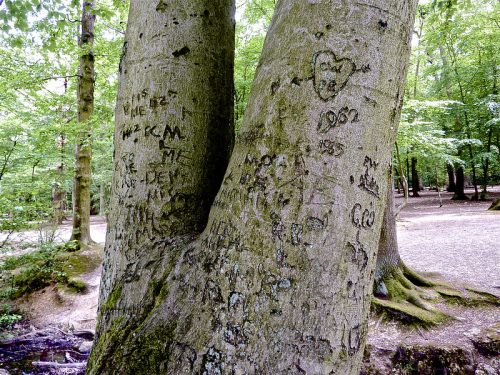
Animals and humans can cause tree scarring. Bucks rub their scent on trees to attract does during the mating season. Black bears shimmy up against trees to remove their winter coats and communicate with other bears by leaving their scent-marks along trunks. If you have ever seen someone’s “Harry loves Sally” declaration carved into a trunk, this is yet another form of tree scarring that leaves a tree more prone to decay.
Wherever wood is cracked open, insects like sugar maple borers or bark beetles can come in and weaken the tree further. Birds like sapsuckers and woodpeckers also drill into wound sites and deepen cavities.
Root Damage
When roots don’t get enough oxygen or the right amount of water or break off, this sets the stage for decay to begin underground or on another part of the tree linked to the affected roots.
What Does Tree Decomposition Look Like?
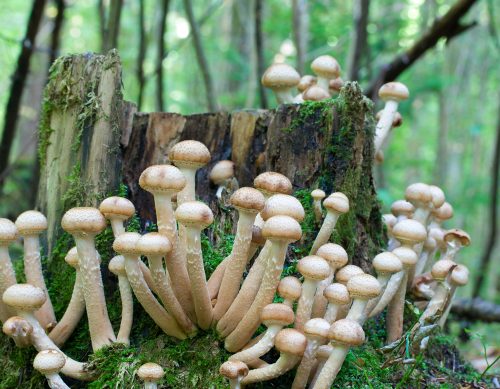
Many fungi, like the Armillaria, make their way onto decaying wood and other organic matter using microscopic spores that can drift in the air for long distances.
Fungi will often inhabit a tree, living within them their whole life, only becoming active later, when the tree becomes old or stressed. Other fungi form symbiotic relationships with trees, like the fly agaric, the classic white-spotted red toadstool, that grows around the roots of birch or pine and protects them against parasitic species.
However, most often when we see a fungus on the side of a tree it spells some level of trouble for the tree, like heart rot in an aspen.
Fungi can commonly spread by extending their networks of microscopic branches (called hyphae). As fungi spread their hyphae along a dying or dead tree, it releases enzymes that break down wood and, at the same time, allows the fungus to feed on it. Mushrooms later pop up from the hyphae as the fruiting bodies of the fungus.
As decay advances, more organisms come along to assist, such as bacteria and invertebrates, including slugs, beetles, woodlice, and millipedes. Organisms that feed on decaying organic matter are called detritivores. As these creatures feed on the wood, they open it up to increased moisture, causing it to get wetter, which helps it fall apart and decompose even faster. Mold also grows on wood – another example of a detritivore.
Once rotten wood starts mixing in with the soil, springtails and earthworms show up to feast on it. Fungi convert the wood’s cellulose and lignin into softer tissues that then decompose as the fungi’s fruiting bodies die.
Other Signs of Tree Decomposition
Live trees can also rot from the inside out, making signs of decay trickier to spot. Besides the signs of wounding mentioned earlier to look out for, here are some tips for spotting a tree that might be rotting internally:
White, Brown, or Soft Rot
There are three types of tree rot brought on by fungi: white rot, brown rot, and soft rot. Each causes the wood of a tree to appear differently and can often be observed in sticks and logs on the ground.
For example, white rot is present when wood appears lighter in color because the fungi feed on the lignin. It can also look fibrous since cellulose remains intact longer. The paper industry occasionally uses this natural, sustainable phenomenon to brighten sheets of paper by introducing white-rot fungi that feed on the lignin of wood chips before it’s processed into pulp, a process referred as biobleaching.
Likewise, brown rot can make wood look crumbly and browner in color when greater amounts of lignin are left behind.
Not as much is known about soft rot, but it occurs when a fungus uses enzymes and nitrogen in the soil to break down cellulose. It can appear similar to brown rot since it also does not target lignin and causes wood to take on a crumby, cubic appearance. Soft rotting logs are often partially buried in soil, giving fungus access to nitrogen from the soil.
Development of Fungi and Mushrooms
There are an awful lot of fungi and mushroom varieties that feed on wood.
Soft or Brittle Wood
When a tree is in a weakened state, soft wood can easily fall apart, and brittle bark or branches tend to crack or tear off easily.
Discolored Leaves
Out-of-season, off-color leaves can be a sign of many things, including water or nutrient shortages, fungal or insect infestation, or mechanical damage to the branch, trunk or roots. In all cases, it is a sign of stress, and could lead to decay.
The Rate of Decomposition
Since trees are woody, their fibers are tougher to break down than non-woody plants, so they take longer to decompose.
There are countless factors that can determine the rate at which a tree decomposes. It may be affected by tree characteristics (species, age), climate (temperature, precipitation), and other circumstances. The tougher the species of tree, the longer the decay process. The wetter its surroundings, the faster a tree can rot. If surroundings are dry, fewer fungi and insects are active to break down wood, so the process can take far longer.
How a Fallen Tree Provides Life
Nutrients and Food Sources
The nutrients a tree used to build itself during its lifetime are spread into the soil and make it richer for other plants around it to use. These nutrients are essential for small trees to grow and replace the dead ones.
Fallen trees also sustain the many detritivores that feed on the decaying wood, like fungi and beetles, earthworms, etc. This means that other animals that prey on those detritivores also benefit, like the robber fly that eats beetles. In turn, the predators of those predators can also find food (like birds and bats) and so on.
More Light and Space
The space left by a fallen tree allows more light to reach the forest floor as well as space for other vegetation to take root and flourish. If a tree falls and takes others down with it, this helps the plants around it even further.
Shelter
Hollow logs are used by bears and smaller animals like foxes for making their dens. Also, a great variety of detritivores make their home in decaying wood, like millipedes and slugs.
Classroom Activities Involving Tree Decomposition
Listed below are a variety of activities for students that will challenge them to look at a forest in entirely new ways.
The Fallen Log
Our “Fallen Log” free family activity helps children understand the many amazing things living in and on rotting logs. Try it out (in English or Español) to help kids understand how decomposition occurs and gain a greater appreciation for micro-habitats.
This activity has been adapted from Activity 24—The Fallen Log found in Project Learning Tree’s PreK-8 Environmental Education Activity Guide; purchase the full version of this activity and 95 other hands-on interdisciplinary activities at Shop.PLT.org.
Nature’s Recyclers
It is critically important for all of us to understand the important role decomposers play in nature through consuming dead material and recycling nutrients back into the soil.
Help your students understand that the final link in the food chain is also the “first” link in the chain of decomposition, as well as learn to differentiate between the primary roles of producers, consumers, and decomposers in nature with Kris Irwin Ph.D.’s article “STEM Strategies: Nature’s Recyclers,” based on the activity of the same name from Project Learning Tree’s PreK-8 Environmental Education Activity Guide.
The Forest of S.T. Shrew
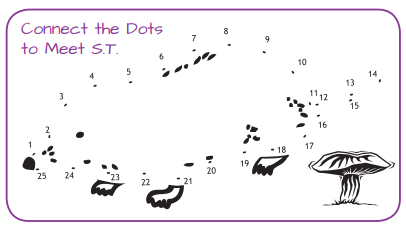 Help students gain an appreciation for the many living things that make forests their homes, and for the variety of habitats within. Read “In the Forest of S.T. Shrew” (also available en Español) to take children on a journey to the forest floor from the viewpoint of a small, and often overlooked, forest creature.
Help students gain an appreciation for the many living things that make forests their homes, and for the variety of habitats within. Read “In the Forest of S.T. Shrew” (also available en Español) to take children on a journey to the forest floor from the viewpoint of a small, and often overlooked, forest creature.
Next, bring the lesson to life by pairing the story with our free family activity (also available in English or Español) to connect S.T. Shew’s experiences with a walk in the woods. This activity has been adapted from Project Learning Tree’s PreK-8 Environmental Education Activity Guide; purchase the full version of this activity and 95 other hands-on interdisciplinary activities at Shop.PLT.org.
Understanding the Lifecycles of Trees
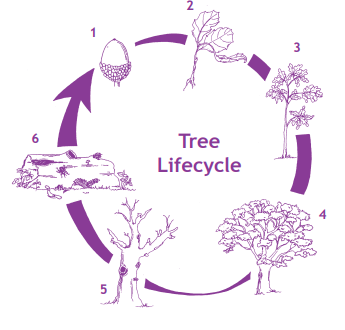 Encourage your students to find out the average age of trees common to your area, or look it up together as a class. Which trees live the shortest and longest? Do they find it surprising? Next time they go for a stroll in the woods, have them count the rings in stumps (that each represents a year in the tree’s life) to get a better grasp on how a species of tree may look at a certain age.
Encourage your students to find out the average age of trees common to your area, or look it up together as a class. Which trees live the shortest and longest? Do they find it surprising? Next time they go for a stroll in the woods, have them count the rings in stumps (that each represents a year in the tree’s life) to get a better grasp on how a species of tree may look at a certain age.
Also, check out these great STEM activities that explore the life cycles of trees. These suggestions supplement Activity 79—Tree Lifecycle (also found in PLT’s PreK-8 guide) in which students investigate a tree’s role in the ecosystem at each stage of its life.
Grades PreK-12
For another activity that shows how scientists determine the age of living and nonliving trees, try this one from NOVA Teachers.
Grades 5-12
Are you looking for downloadable lesson plans and activities for city-dwelling students? In PLT’s Activity 77–Trees in Trouble, you can become “tree-tectives” (tree detectives) by first examining neighborhood trees for signs of poor health and then investigating actions to help trees in trouble. Use this activity’s Student Pages, Tree-tective Trouble Guide and Reading Leaf Symptoms, to examine trees for signs of damage or poor health.
Grades 1-8
Middle schoolers can go a step further to explore their urban environment and investigate environmental issues that affect their urban community with PLT’s “Discover Your Urban Forest” Activity Collection.
Grades 6-8
What Protects Trees from Decay?
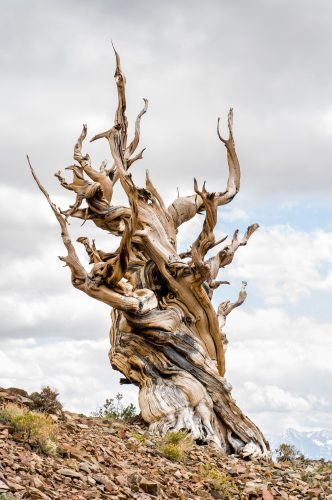
Trees have certain characteristics that protect them from getting hurt, much like humans do. Like our skin, a tree’s bark wraps around it and works to keep infection or invasion out. Cells in a tree can sense infection and fight it off, much like our immune systems do. If you spot gooey, amber-colored resin (thick sap) oozing from a tree’s trunk, it’s acting like a scab to seal the wound and protect itself. In what other ways are humans and trees similar?
Discuss with your class or have them research on their own: What protective and adaptive qualities might Great Basin bristlecone pines have that contribute to their great longevity? Does its environment also contribute to its long life? If so, how?
You can also divide your class into groups and assign a certain tree species to each. Have each group research what characteristics or environmental factors contribute to that tree’s lifespan in a group PowerPoint project.
Grades 5-12
Fun with Fungi
Teach your class all about the wonders of the fungi kingdom with this lesson plan and other helpful resources from the North American Mycological Association.
Grades K-12
Enjoy these options of hands-on exercises that illustrate what spores, mold, and yeast look like in action from National Agriculture in the Classroom.
Grades 6-8
Do your students live near a forested area east of the Mississippi River? Check out the Forest Fungus Project citizen science initiative!
Grades K-12
Decay Scavenger Hunts
- Download a handy mushroom identifying app like Shroomify (if your classroom is virtual) or use the National Audubon Society Field Guide to North American Mushrooms to identify types of mushrooms growing on trees along a field trip walk or from pictures found online. But just don’t eat them.
- Ask students to list or draw signs of tree decay and decomposition they notice along a walk. Can you spot any trees that look likely to fall? If so, explain why.
- Examine varieties of detritivores near you. For example, look on or under a decaying log or a part of a rotting tree. List the characteristics of the creatures you see in the decaying wood and observe their behavior. You can also do a quick sketch of them.
More Critical Thinking Exercises
- How can you preserve the health and balance of a delicate forest ecosystem in light of learning about decay and decomposition? Outline your ideas and reasoning in a paper or PowerPoint and present it to the class.
- If the natural process of decay and decomposition is essential for a forest, why is controlled burning also important? Research controlled burning and maybe some other key forest management strategies that improve the health of an ecosystem. What do people have to be careful to consider or do when planning and executing these human-led activities?
- Explore how wood becomes petrified in a process that looks very different from decay.
- How do people prevent houses, decks, telephone poles, instruments, and other things made of wood from decaying? Research the various methods.


